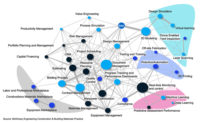What is a bad day for Michael Horodniceanu?
Is it getting “blasted” at meetings by business owners complaining over a drop in sales as a result of the $4.45-billion Second Avenue Subway (SAS) in New York City?
No, he says. That's routine. “A bad day is when I get an e-mail about the Corbin Building underpinning—that the building had begun to move. A bad day is when I [recently] learned we would have more East Side Access delays. We still don't know how much the delay will be, but that was a bad day.”
A common project feature is the frustration of Manhattan Upper East Side businesses and residents with the subway project's impacts. But between his dealings with the project's geotechnical issues and budget problems, Horodniceanu is making time to communicate with the neighborhoods around the project and build trust.
“I'm used to controlling my own destiny,” says Horodniceanu, 67, president of the Metropolitan Transportation Authority's Capital Construction Co. (MTACC). He is responsible for leading some $17-billion worth of rail and transit expansions and related security projects in New York City and its suburbs. The area is full of ruthless critics, institutions slow to embrace change and endless technical obstacles.
Scores of colleagues and observers say Horodniceanu's (pronounced “Horod-NEE-chee-AH-noo”) engineering expertise, social engineering skills and sense of humor have been pivotal. “If anyone can get that Second Avenue Subway done, he is the guy,” says Claire Shulman, former Queens borough president. “And he's a Queens guy,” she adds with a chuckle.
“In government, it's pretty rare in my experience to do difficult jobs and have a pleasant personality—to have people cooperate with you just because of who you are,” Shulman says.
Horodniceanu did just that in December when he and Joe Pecora, one of the project's most vocal critics, cooked dinner for construction crews in Pecora's restaurant, Delizia 92 pizzeria, near 92nd Street. More than 30 businesses in the neighborhood have reportedly shuttered since the project began, which inspired Pecora to form the Second Avenue Business Association and publicize the project's impact on businesses.
“I realized that shying away [from project critics] was the worst thing to do,” Horodniceanu says. “I went uptown and walked into stores. I said, 'Talk to me. Help us learn how to be a good neighbor.' ” Pecora could not be reached for comment, but Horodniceanu says he will cook dinner again around Thanksgiving this year in Pecora's restaurant.
Of course, other project challenges are beyond Horodniceanu's listening tour. The underpinning of the Corbin Building, which is adjacent to the $1-billion Fulton Street Transit Center, ended up without major problems. The “re-baselining” of the staggeringly complex East Side Access (ESA) project schedule, however, is under way, says Horodniceanu. Again, the delay was due to circumstances he could not control. One factor is that, in May, an Amtrak train derailed in one of the East River tunnels. Following this incident, inspections revealed significant water-drainage issues inside the tunnels.













Post a comment to this article
Report Abusive Comment